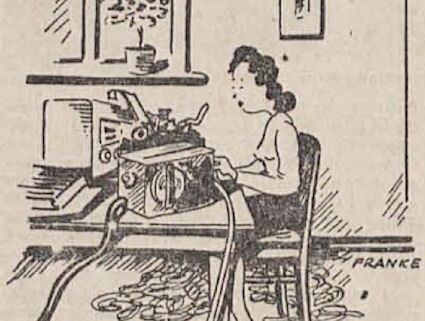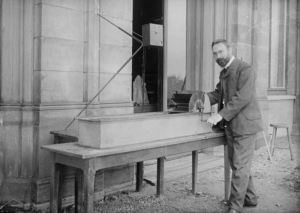Hellschreiber – or the devil’s writing
Article by HE Translations marketing representative Mike Gayler
Those of a certain age will remember both telexes and fax machines. If you are a mere youngster, let me try to explain:
Telex was a way of sending typed messages from one ‘typewriter’ to another (please tell me you do vaguely know what a typewriter is? No? OK – let’s say from one keyboard to another).
The sending operator typed the message into his keyboard and it was sent through the phone system to the receiving keyboard, where the message would be printed out. How, you ask, did it get to the right place? Every keyboard had its own identification – originally not a number, but a name. Names like ‘Interflora’ , ‘Interpol’ or ‘Insurance’.Continue reading full article…









 It’s easy you say, but a simple request that sounds like a snap can turn into a translation trap. Web pages are where we read these days, so why not start the job there and just translate what you see on the website? Well, web pages are actually made up of not just the words and images you see on the surface, but also technical code you don’t see, and styling you do, so you may regret your words when you find yourself swimming in a simmering sea of alphabet soup. And what if the result can’t be served up in a way that can be readily consumed? So before just jumping in and translating web pages, let’s look at what really is on a web page and how the text there might, or might not, mesh with the
It’s easy you say, but a simple request that sounds like a snap can turn into a translation trap. Web pages are where we read these days, so why not start the job there and just translate what you see on the website? Well, web pages are actually made up of not just the words and images you see on the surface, but also technical code you don’t see, and styling you do, so you may regret your words when you find yourself swimming in a simmering sea of alphabet soup. And what if the result can’t be served up in a way that can be readily consumed? So before just jumping in and translating web pages, let’s look at what really is on a web page and how the text there might, or might not, mesh with the 




 When you need a translation of a technical text or manual, what you really are looking for is a specialist expert in this field to do the job right. A serious translation ensures the accurate and usable rendering of descriptions and instructions into the target language, preventing time-consuming and expensive misunderstandings which could arise later. To achieve this an effective translator needs to understand not just the words on the page, but the technical processes and functioning of a technology or product.
When you need a translation of a technical text or manual, what you really are looking for is a specialist expert in this field to do the job right. A serious translation ensures the accurate and usable rendering of descriptions and instructions into the target language, preventing time-consuming and expensive misunderstandings which could arise later. To achieve this an effective translator needs to understand not just the words on the page, but the technical processes and functioning of a technology or product.